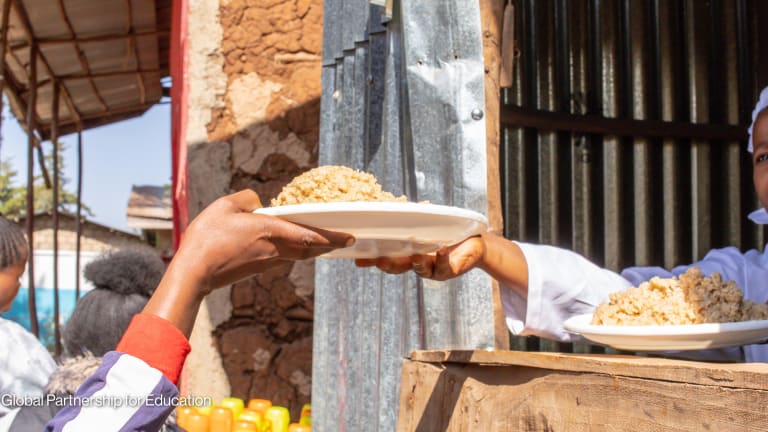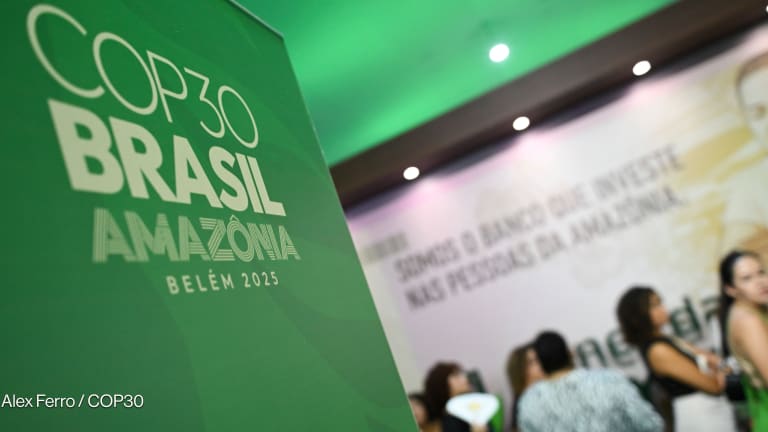
BARCELONA — Many governments plan to make their post-COVID recovery “greener” to simultaneously address climate change yet the biggest thing standing in their way is finance, says Frank Rijsberman, director-general of the Global Green Growth Institute.
“When COVID broke out, I was quite worried that the corporate emergency would displace all other priorities and there would be no longer any interest in climate action, but we're finding that a lot of people are reflecting on COVID as a sign of how unsustainable our socio-economic system was,” Rijsberman said, adding that, as a result, there’s been more interest in “greening the recovery” than he would have predicted.
While COVID-19 and the subsequent lockdowns and travel restrictions have had a positive effect on the environment, it remains to be seen whether such momentum can continue beyond the pandemic. According to a new report by GGGI, although global emissions decreased by 1% following the 2008-2009 financial crisis, they rose by 5% in the following years due to recovery investments.
“I'm more optimistic now than a few months ago with more governments saying, ‘Yes, we do want a green recovery.’ But then emerging economies say, ‘Where is the money?’ That is the key obstacle that we're trying to work on.”
Speaking to Devex, Rijsberman shared practical advice on how countries can begin to implement a green COVID-19 recovery and the challenges they face in doing so.
“For developing countries, mobilizing money, finding money from development aid to add in with public sector money and finding opportunities to mobilize private sector money is probably the largest challenge.”
— Frank Rijsberman, director-general, Global Green Growth InstituteThis conversation has been edited for length and clarity.
What sectors are most affected by COVID-19?
There are two ways of looking at it: both the sectors that have been heavily affected and the sectors where there are opportunities for a green recovery. They partly overlap.
One of the worst affected sectors is tourism, particularly in many small island nations — places like Fiji and Vanuatu where almost half of the gross domestic product comes from tourism. The day that the airports closed, all that dried up. Not much of a green recovery is possible until all those travel restrictions are removed, which will be some time from now.
For the areas where we focus on green recovery, there are a lot of opportunities in cities. That's the first sector that we discuss in more detail in this [“Achieving Green Growth and Climate Action Post-COVID-19”] report as well. And almost every government wants to look at green employment or jobs in general.
In June, we came out with a report on the employment impact of renewable energy investments in light of the nationally determined contributions for the Paris Agreement [on climate change]. That kind of analysis comes into this new look at how we can help governments recover. Around cities, it's particularly building renovation, energy efficiency, waste management, and electric mobility. Each of these are parts of green cities that we’ve worked on before that we now offer up to governments as having a particular opportunity to create green jobs as part of the recovery.
South Korea, where GGGI is based, has announced a Green New Deal to aid the economy while making it more eco-friendly. Do you think the approach is one that other countries should be replicating?
There is a lot of similarity between the green deal in the European Union and in [South] Korea. There's even quite a bit of similarity with the green deal proposed for the United States — not by the government, but by the opposition. These ideas are not exclusive to South Korea.
“We are actually optimistic that green investments can actually produce more jobs rather than fewer.”
—They are indeed similar to the ones that we line up in the [“Enhancing Transparency of Climate Finance under the Paris Agreement: Lessons from Experience”] report. We also are using our experience with earlier green deals after the 2008/2009 global financial crisis.
There were a number of stimulus plans, a number of them had green elements. Some of those were important green elements and during the financial crisis, the overall greenhouse gas emissions went down briefly. But the brown elements [bigger investments in very energy intensive industries] in these stimulus plans, particularly in places like China, quickly meant that after the global financial crisis in 2010, greenhouse gas emissions went back up.
This time we’re saying we should be quite careful in our advice to governments so that not only are there green elements in those new deals, but that they outweigh the brown elements, so that the sum of it is indeed a push toward a greener economy.
What do you see as the challenges in taking a green approach to building back post-COVID?
In developed countries, many governments have been able to mobilize very large amounts of money. The United Kingdom, Europe, and [South] Korea — almost all developed countries — have miraculously found huge amounts of money, but much less so in emerging economies and even less so in developing countries.
Green deals are more a subject of discussion in developed countries and we are using this report to point out to our members, to emerging and least developed countries, that while there are clearly financing challenges, there are also significant opportunities to create jobs and to make that recovery greener.
For developing countries, mobilizing money, finding money from development aid to add in with public sector money and finding opportunities to mobilize private sector money is probably the largest challenge.
On a practical level, how might different sectors start to take steps to recover in a green way and, at the same time, overcome some of those challenges?
As early as March and April, we provided proposals to support governments with a green recovery and we are now mediating between our member countries and donors. I can't say exactly which, because none of these contracts have been signed, but with at least four different donors we are in advanced stages of discussion to implement green recovery projects in between 15 and 20 different countries, mostly small island development states in the Pacific and the Caribbean and least developed countries in Africa.
This year was also the year of the more ambitious NDCs for the Paris Agreement and a lot of that preparatory work for better NDCs, for 2030, or for long-term strategies for 2050 is now morphing into green recovery type work. We're using a number of the projects that were there to support governments in climate action to now look at how they can come up with green recovery and climate action and mobilize the same types of funding from the Green Climate Fund to fund such green recovery plans?
If there was just one action governments should take when thinking about a green COVID recovery, what should it be?
Last year, we talked about climate action primarily around greenhouse gas emission reduction potential. This year, greenhouse gas emission reduction potential is of course still hugely important, but also we’re seeing a lot of evidence that green investments produce more green jobs than are lost in the brown parts of the economy.
We are actually optimistic that green investments can actually produce more jobs rather than fewer.








